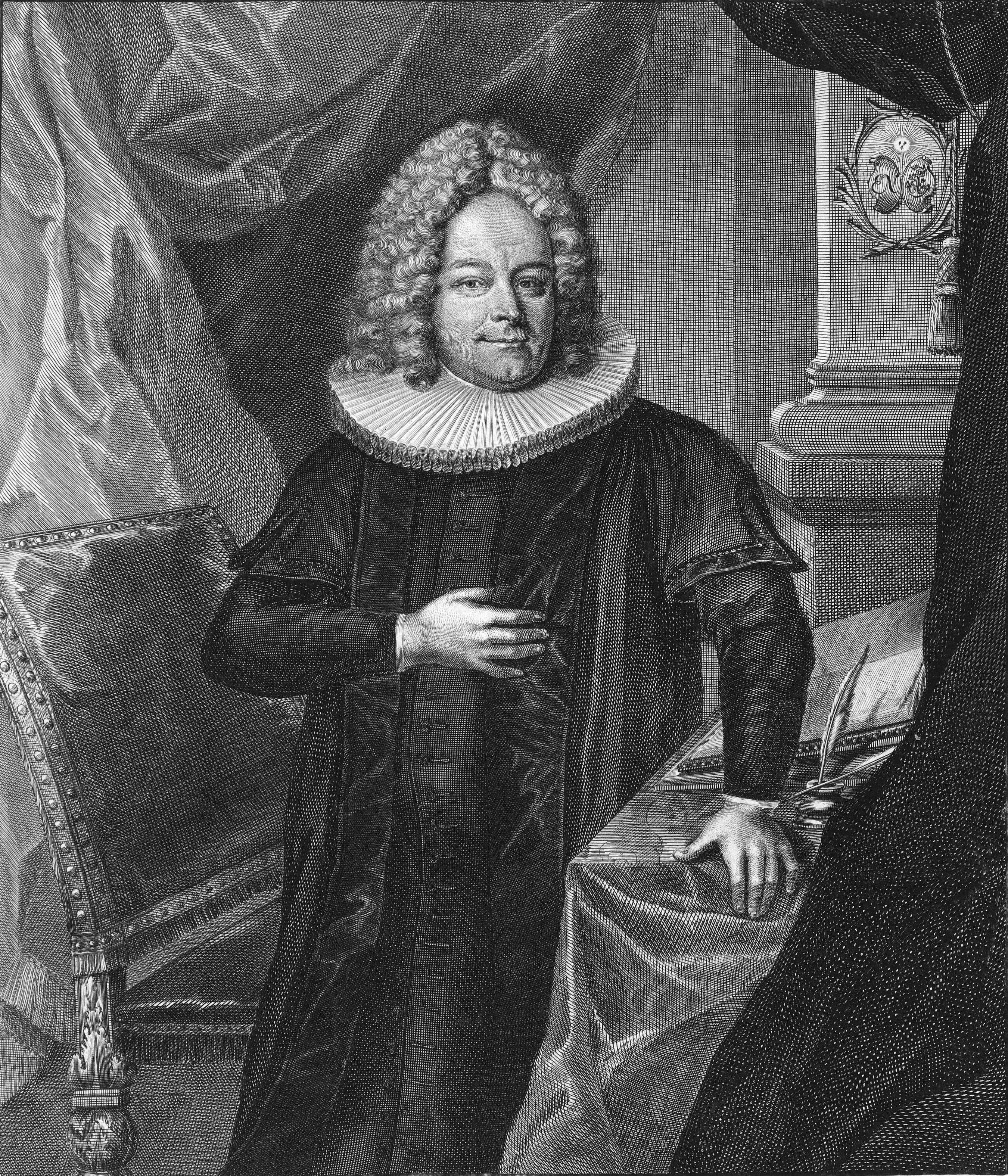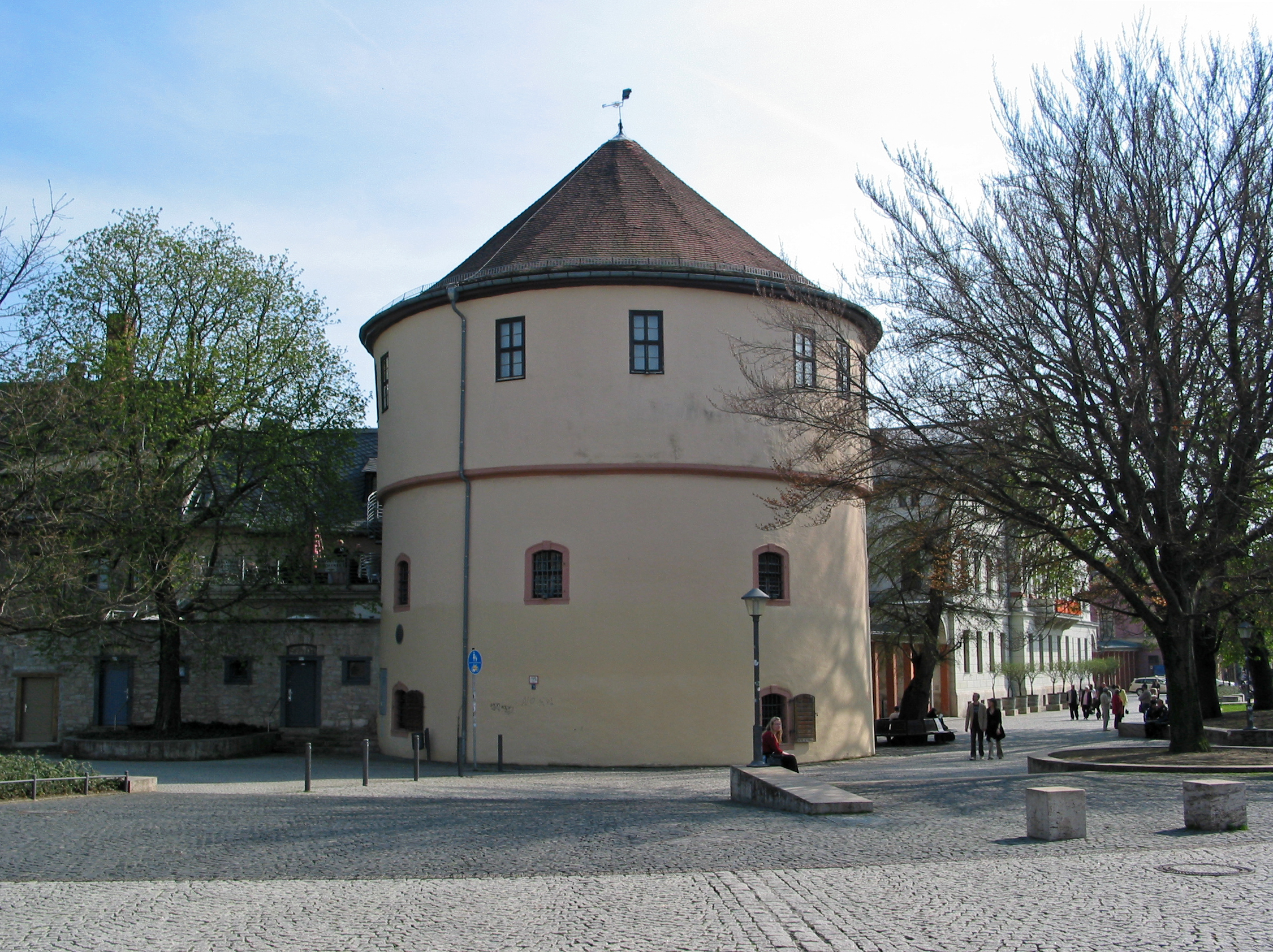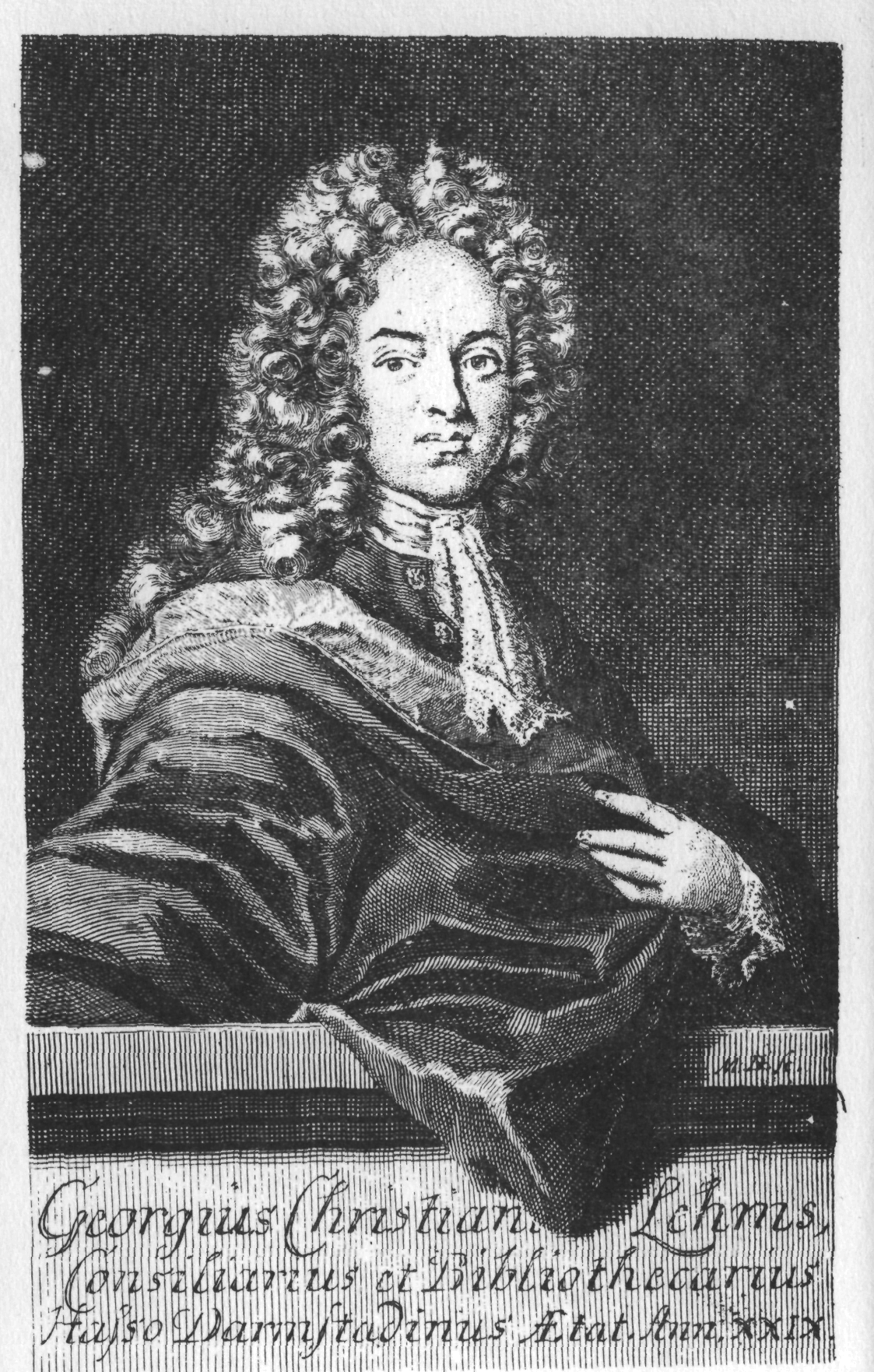|
Erdmann Neumeister
Erdmann Neumeister (12 May 1671 – 18 August 1756) was a German Lutheran pastor and hymnologist. He was born in Uichteritz near Weißenfels in the province Saxonia of Germany. As a fifteen-year-old boy he started his studies in Schulpforta, an old humanistic gymnasium. He became a student of poetology and theology in the University of Leipzig between 1691 and 1697. He began his career as a minister of religion in the spa town of Bibra. He became diaconus (deacon) for the duke of Saxonia-Weissenfels. From 1705 to 1715, he was superintendent in Sorau (today Zary in Poland). He left for Hamburg because of theological disputes. (As an adult, he would become a vehement opponent of Pietism). He died in Hamburg as an honoured main pastor. His grave in the St. Jacobi Church was destroyed during World War II. Works Hymns He is remembered for several hymns, including "Jesus, Great and Wondrous Star" and "Sinners Jesus Will Receive". Cantatas Neumeister was an influential wr ... [...More Info...] [...Related Items...] OR: [Wikipedia] [Google] [Baidu] [Amazon] |
Erdmann Neumeister 1719
Erdmann is a first name and surname, and may refer to: Surname *Carl Erdmann (1898—1945), German historian *Eduard Erdmann (1896—1958), Baltic German pianist and composer * Hans Otto Erdmann (1896–1944), member of the German resistance *Hugo Erdmann (1862—1910), German chemist *Johann Eduard Erdmann (1805—1892), German philosopher *Karin Erdmann (born 1948), German mathematician *Karl Gottfried Erdmann (1774—1835), German physician and botanist *Mojca Erdmann (born 1975), German opera soprano *Nikolai Erdman (1900—1970), Russian dramatist *Otto Linné Erdmann (1804–1869), German chemist *Rhoda Erdmann (1870–1935), German cell biologist *Susi Erdmann (born 1968), German luger and bobsledder *Ralph Erdmann, American pathologist *Wilfried Erdmann (1940–2023), German sailor * Wolfgang Erdmann (1898–1946), German general of paratroopers First name *Erdmann Copernicus (died 1573), German scholar, not related to the astronomer *Erdmann August, Hereditary Prince of Br ... [...More Info...] [...Related Items...] OR: [Wikipedia] [Google] [Baidu] [Amazon] |
Recitative
Recitative (, also known by its Italian name recitativo () is a style of delivery (much used in operas, oratorios, and cantatas) in which a singer is allowed to adopt the rhythms and delivery of ordinary speech. Recitative does not repeat lines as formally composed songs do. It resembles sung ordinary speech more than a formal musical composition. Recitative can be distinguished on a continuum from more speech-like to more musically sung, with more sustained melodic lines. The mostly syllabic ''recitativo secco'' ("dry", accompanied only by Basso continuo, continuo, typically cello and harpsichord) is at one end of the spectrum, through ''recitativo accompagnato'' (using orchestra), the more melismatic arioso, and finally the full-blown aria or ensemble, where the pulse is entirely governed by the music. Secco recitatives can be more improvisatory and free for the singer, since the accompaniment is so sparse; in contrast, when recitative is accompanied by orchestra, the singer m ... [...More Info...] [...Related Items...] OR: [Wikipedia] [Google] [Baidu] [Amazon] |
Bach-Werke-Verzeichnis
The (, ; BWV) is a Catalogues of classical compositions, catalogue of compositions by Johann Sebastian Bach. It was first published in 1950, edited by Wolfgang Schmieder. The catalogue's second edition appeared in 1990 and the third edition in 2022.Bach-Werke-Verzeichnis (BWV). Thematisch-systematisches Verzeichnis der musikalischen Werke von Johann Sebastian Bach, 3rd expanded edn. Edited by Christine Blanken, Christoph Wolff and Peter Wollny The catalogue groups compositions by genre. Even within a genre, compositions are not necessarily collated chronologically. In part this reflects that fact that some compositions cannot be dated. However, an approximate or precise date can be assigned to others: for example, BWV 992 was composed many years before BWV 1. Alternative classifications The BWV classification is open to criticism, and the Bach scholar Christoph Wolff was involved in the design of an alternative, the Bach Compendium. Publication of the Bach Compendiu ... [...More Info...] [...Related Items...] OR: [Wikipedia] [Google] [Baidu] [Amazon] |
Köthen (Anhalt)
Köthen () is a town in Germany. It is the capital of the district of Anhalt-Bitterfeld in Saxony-Anhalt, about north of Halle. Köthen is the location of the main campus and the administrative centre of the regional university, Anhalt University of Applied Sciences/Hochschule Anhalt which is especially strong in information technology. The city is conveniently located at the hub of the Magdeburg–Leipzig, Dessau–Köthen and Köthen–Aschersleben railways. Köthen is situated in a fertile area with rich black soil suitable to the cultivation of sugar-beets. Industry includes high-tech engineering, manufacture of cranes, as well as chemicals, printing, and foodstuffs. In English, the name of the city is often spelt anachronistically as Cöthen, a practice that has become standard in the literature relating to the life and work of Johann Sebastian Bach, who resided and worked there from 1717 to 1723. History Owing to the fertile soil of the region, the area of Köthen ... [...More Info...] [...Related Items...] OR: [Wikipedia] [Google] [Baidu] [Amazon] |
Weimar
Weimar is a city in the state (Germany), German state of Thuringia, in Central Germany (cultural area), Central Germany between Erfurt to the west and Jena to the east, southwest of Leipzig, north of Nuremberg and west of Dresden. Together with the neighbouring cities of Erfurt and Jena, it forms the central metropolitan area of Thuringia, with approximately 500,000 inhabitants. The city itself has a population of 65,000. Weimar is well known because of its cultural heritage and importance in German history. The city was a focal point of the German Enlightenment and home of the leading literary figures of Weimar Classicism, Johann Wolfgang von Goethe and Friedrich Schiller. In the 19th century, composers such as Franz Liszt made Weimar a music centre. Later, artists and architects including Henry van de Velde, Wassily Kandinsky, Paul Klee, Lyonel Feininger, and Walter Gropius came to the city and founded the Bauhaus movement, the most important German design school of the int ... [...More Info...] [...Related Items...] OR: [Wikipedia] [Google] [Baidu] [Amazon] |
Bach Cantatas
This is a sortable list of Bach cantatas, the cantatas composed by Johann Sebastian Bach. His almost 200 extant cantatas are among his important vocal compositions. Many are known to be lost. Bach composed both church cantatas, most of them for specific occasions of the liturgical year of the Lutheran Church, and secular cantatas. Bach's earliest cantatas were written possibly from 1707, the year he moved to Mühlhausen, although he may have begun composing them at his previous post in Arnstadt. He began regular composition of church cantatas in Weimar between 1708 and 1717, writing one cantata per month. In his next position in Köthen, he composed no church cantatas, but secular cantatas for the court. Most of Bach's church cantatas date from his first years as and director of church music in Leipzig, a position which he took up in 1723. Working for Leipzig's and , it was part of Bach's job to perform a church cantata every Sunday and holiday, conducting soloists, the Thom ... [...More Info...] [...Related Items...] OR: [Wikipedia] [Google] [Baidu] [Amazon] |
Johann Sebastian Bach
Johann Sebastian Bach (German: Help:IPA/Standard German, [ˈjoːhan zeˈbasti̯an baχ]) ( – 28 July 1750) was a German composer and musician of the late Baroque music, Baroque period. He is known for his prolific output across a variety of instruments and forms, including the orchestral ''Brandenburg Concertos''; solo instrumental works such as the Cello Suites (Bach), cello suites and Sonatas and Partitas for Solo Violin (Bach), sonatas and partitas for solo violin; keyboard works such as the ''Goldberg Variations'' and ''The Well-Tempered Clavier''; organ works such as the ' and the Toccata and Fugue in D minor, BWV 565, Toccata and Fugue in D minor; and choral works such as the ''St Matthew Passion'' and the Mass in B minor. Since the 19th-century Reception of Johann Sebastian Bach's music, Bach Revival, he has been widely regarded as one of the greatest composers in the history of Western music. The Bach family had already produced several composers when Joh ... [...More Info...] [...Related Items...] OR: [Wikipedia] [Google] [Baidu] [Amazon] |
Alfred Dürr
Alfred Dürr (3 March 1918 – 7 April 2011) was a German musicologist. He was a principal editor of the Neue Bach-Ausgabe, the second edition of the complete works of Johann Sebastian Bach. Professional career Dürr studied musicology and Classical philology at the Georg-August-Universität Göttingen from 1945 to 1950. He wrote his thesis about Bach's early Bach cantata, cantatas. From 1951 until his retirement in 1983 he was an employee of the Johann Sebastian Bach Institute in Göttingen, West Germany, from 1962 to 1981 its deputy director. His work involved collaboration with colleagues in East Germany. He was a principal editor of the Neue Bach-Ausgabe, a project which was divided between the Johann Sebastian Bach Institute and the Bach-Archiv Leipzig in East Germany. From 1953 to 1974 Dürr was editor of the ''Bach-Jahrbuch'' (Bach almanach), together with Werner Neumann, the founder and director of the Bach-Archiv Leipzig. Dürr received honorary doctorates of music fro ... [...More Info...] [...Related Items...] OR: [Wikipedia] [Google] [Baidu] [Amazon] |
Chorales
A Lutheran chorale is a musical setting of a Lutheran hymn, intended to be sung by a congregation in a German Protestant church service. The typical four-part setting of a chorale, in which the sopranos (and the congregation) sing the melody along with three lower voices, is known as a ''chorale harmonization''. The practice of singing in unison was the rule of the reformed churches, both in Germany and in other countries. Lutheran hymns Starting in 1523, Martin Luther began translating worship texts into German from the Latin. He composed melodies for some hymns himself, such as "Ein feste Burg ist unser Gott" ("A Mighty Fortress Is Our God"), and even a few harmonized settings. For other hymns he adapted Gregorian chant melodies used in Catholic worship to fit new German texts, sometimes using the same melody more than once. For example, he fitted the melody of the hymn "Veni redemptor gentium" to three different texts, " Verleih uns Frieden gnädiglich", "Erhalt uns, Herr, ... [...More Info...] [...Related Items...] OR: [Wikipedia] [Google] [Baidu] [Amazon] |
Georg Christian Lehms
Georg Christian Lehms (; 1684 – 15 May 1717) was a German poet and novelist who sometimes used the pen-name ''Pallidor''. He published poetry, novels, libretti for operas, and the texts of cantatas. Life Born in Liegnitz (now in Poland) in 1684, Lehms attended the '' Gymnasium'' (high school) in Görlitz and later studied at the University of Leipzig. After spending some time at the court of Johann Georg, Duke of Saxe-Weissenfels, at the end of 1710 Lehms gained a position as court librarian and poet in Darmstadt, capital of the Landgraviate of Hesse-Darmstadt, where by 1713 he had been appointed to the Prince's council.Georg Christian Lehms (Librettist) at bach-cantatas.com, Retrieved 1 January 2012 Lehms died of |
Kapellmeister
( , , ), from German (chapel) and (master), literally "master of the chapel choir", designates the leader of an ensemble of musicians. Originally used to refer to somebody in charge of music in a chapel, the term has evolved considerably in its meaning and is today used for denoting the leader of a musical ensemble, often smaller ones used for TV, radio, and theatres. Historical usage In German-speaking countries during the approximate period 1500–1800, the word often designated the director of music for a monarch or nobleman. For English speakers, it is this sense of the term that is most often encountered, since it appears frequently in biographical writing about composers who worked in German-speaking countries. During that period, in Italy, the position (Italian: ''maestro di capella'') largely referred to directors of music assigned to cathedrals and sacred institutions rather than those under royal or aristocratic patronage. A Kapellmeister position was a senior one ... [...More Info...] [...Related Items...] OR: [Wikipedia] [Google] [Baidu] [Amazon] |






